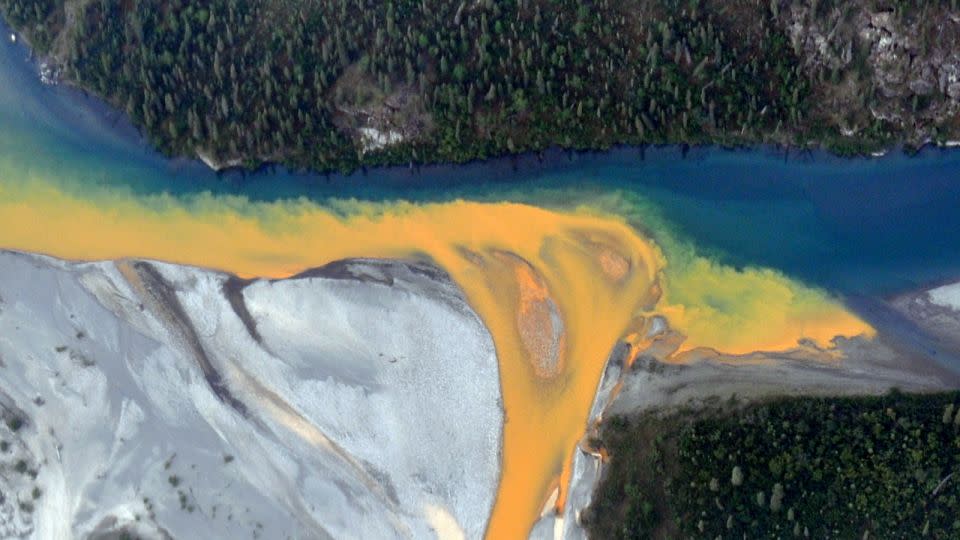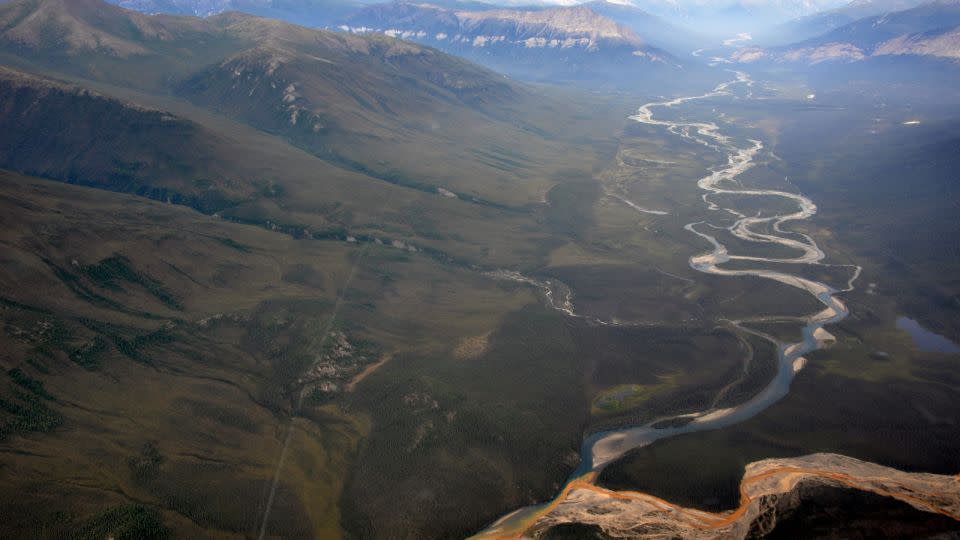Rivers and streams in Alaska are changing color – from a clean, clear blue to a rusty orange – because of the toxic metals released by thawing permafrost, according to a new study.
The finding surprised researchers from the National Park Service, the University of California at Davis and the US Geological Survey, who conducted tests at 75 locations in the waterways of Alaska’s Brooks Range. The rivers and streams in the range appeared to rust and became cloudy and orange over the past five to 10 years, according to the study published in the journal Communications: Earth & Environment.
The discoloration and cloudiness are being caused by metals such as iron, zinc, copper, nickel and lead, the researchers found – some of which are toxic to the river and stream ecosystems – as permafrost thaws and exposes the waterways to minerals locked away underground for thousands of years.
“We’re used to seeing this in parts of California, parts of Appalachia where we have mining history. This is a classic process that happens in rivers here in the continental US that have been impacted for over 100 years since some of the mining rushes in the 1850s,” said Brett Poulin, a co-author of the study and a professor of environmental toxicology at UC Davis.
“But it’s very startling to see it when you’re on some of the most remote wilderness and you’re far from a mine source.”

orange paint spilling into the clear blue water. – Ken Hill/National Park Service
Arctic soils naturally contain organic carbon, nutrients and metals, such as mercury, within their permafrost, the study says. High temperatures have caused these minerals and the water sources around them to meet as permafrost melts.
The Arctic is warming four times faster than the rest of the world, studies have shown.
“What we believe we’re seeing is this thawing of soil that’s happening faster there than it would happen elsewhere,” said Poulin. “It’s really an unexpected consequence of climate change.”
Researchers used satellite imagery to determine when the change in color happened at different rivers and streams.
“At several of the locations it happened, the most drastic increases were between 2017 and 2018 and they coincided with the warmest years on record at that point,” said Poulin.
This discoloration has been linked to “dramatic declines” in aquatic life, raising concerns about how the continued melting of permafrost will affect communities that rely on those waterways for drinking and fishing.
In Alaska’s Arctic rivers alone reside a variety of fish that are “critical for subsistence, sport, and commercial fisheries,” researchers wrote. Poulin said local communities voiced their concerns and observations to study researchers beginning seven years ago.


of the water is rust-stained. – Ken Hill/National Park Service
Alaska is not the only state experiencing this phenomenon. Another study, published just a month before researchers in Alaska made their findings public, details how Colorado’s Rocky Mountains are seeing similar effects from, among other things, a warming climate.
The study, published by Water Resources Research, notes an increase of metal concentrations – namely sulfate, zinc and copper – across 22 of Colorado’s mountain streams in the past 30 years. Researchers found a reduced streamflow accounted for half of the increase, while the other half, they say, is from the thawing of frozen ground that allows for minerals to leach out of the bedrock.
These studies have extended beyond the US in the past. Similar research on increases in metal and rare earth element concentrations in mountain rivers and streams has been done in the Chilean Andes, the European Alps and the Pyrenees in northern Spain.
Although some of these areas have been exposed to mining sites and thus have seen metal concentrations in rivers and streams over the years, the noted increases raise questions about how climate change will continue to impact mountain water sources.
Researchers in Alaska will continue their study in the coming years to determine the location of the metal and mineral sources, and how aquatic and human life will be impacted.
For more CNN news and newsletters create an account at CNN.com
Source Agencies



